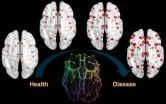(Press-News.org) TAMPA, Fla. - Moffitt Cancer Center researchers are taking a unique approach to understanding and investigating cancer by utilizing evolutionary principles and computational modeling to examine the role of specific genetic mutations in the Darwinian struggle among tumor and normal cells during cancer growth.
Cells become malignant by acquiring genetic mutations that lead to increased survival and reproduction. Many researchers in the past have viewed cancer progression as the result of unlimited accumulation of these genetic mutations. However, Moffitt researchers model cancer progression on the premise that cancer cells live in an environment that has limited resources, such as space and nutrients and, like all living organisms, must obey the laws of evolution. These laws include trade-offs between proliferation and survival.
For example, elephants use their available resources primarily to maximize survival so that they have relatively long lives and few offspring. Rabbits, on the other hand, produce many offspring but survive in the wild for less than two years. Similarly, cells that evolve to form cancers can do so by either increasing longevity or increasing the number of offspring. But like elephants and rabbits, they can only move down one evolutionary path at a time, so the mutations observed in cancer cells are limited to this evolutionary trade-off. With this in mind, cancer cells can invest available resources in maximizing their defenses against attacks by the normal tissue or accept a high rate of mortality and overcome it through very rapid proliferation. The cells cannot do both.
Moffitt researchers performed computer simulations based on these concepts. They found that the frequency with which any genetic mutation is observed depends on its ability to increase the cell's fitness, its ability to survive and reproduce. The researched called this process "evolutionary triage."
"Genes that increase fitness are observed more frequently than those that do not," explained Robert A. Gatenby, M.D., chair of the Department of Diagnostic Imaging and co-director of the Cancer Biology and Evolution Program at Moffitt. "However, the effect of any mutation on cell fitness can change drastically depending on environmental factors such as blood flow, past genetic mutations, and the properties of competing cells. Currently, cancer biologists divide mutations into 'drivers,' which promote tumor growth and 'passengers,' which have no effect on growth. In the computer simulations, it was clear that many mutations could be drivers in one environment, but passengers in another."
Since driver mutations are common targets for cancer therapy, the scientists also simulated therapies that seek to disable driver genes. Similar to what is found in clinical settings, they observed that targeted therapies can kill the mutated cells and decrease the tumor size. However, the diversity of tumor environments produces many mutational pathways to formation of a malignant cell. As result, cancer cells that lack the driver mutation and are resistant to therapy were almost invariably present and caused the tumor to recur.
The investigators were startled to find that some genes were actually never observed to be mutated in cancers. It turned out that mutations in these genes always reduced the tumor cell's ability to survive or reproduce. As a result, even when they occurred, evolutionary triage eliminated them because they were less fit than their competitors. According to Gatenby, "our computer simulations demonstrate an unexpected result - genes that are never observed to be mutated might actually be the best targets for therapy. This is because up or down regulation of these genes unconditionally reduces cell fitness."
The researchers showed that targeting genes that are never mutated, particularly when followed by treatment that targeted cancer driver mutations, was a highly effective treatment strategy. The final question was: "Do 'never mutations' exist in human cancer?" Fortunately, large databases that list all of the mutations in clinical cancers have been developed by the National Cancer Institute. With the help of Mohammad Fallahi-Sichani, Ph.D., a bioinformatics expert from the Scripps Research Institute, 1,100 genes that are never mutated in human cancers were identified. The research group, which included Moffitt Physicist Jessica Cunningham and Joel S. Brown, an evolutionary biologist at University of Illinois, is now working with John Cleveland, Ph.D., associate center director of Basic Science at Moffitt, to investigate the possibility of targeting "never" genes for therapy.
INFORMATION:
This study was published in the Nov. 19 issue of Nature Communications, and was funded by the National Cancer Institute through a Physical Sciences in Oncology Centers (PS-OC) grant (U54CA143970-01) and provocative question grant (R01CA170595). The PS-OC is a network of 12 centers throughout the United States, including Moffitt, that brings together cancer researchers, mathematicians, physicists, chemists, and engineers to investigate unsolved problems in cancer through alternative perspectives. The PS-OC grant was awarded to the Moffitt researchers based on their proposed innovative studies to analyze the evolutionary dynamics of cancer through computational models.
About Moffitt Cancer Center:
Located in Tampa, Moffitt is one of only 41 National Cancer Institute-designated Comprehensive Cancer Centers, a distinction that recognizes Moffitt's excellence in research, its contributions to clinical trials, prevention and cancer control. Moffitt is the top-ranked cancer hospital in the Southeast and has been listed in U.S. News & World Report's "Best Hospitals" for cancer since 1999. With more than 4,500 employees, Moffitt has an economic impact on Florida of nearly $1.6 billion. For more information, visit MOFFITT.org, and follow the Moffitt momentum on Facebook, Twitter and YouTube.
Fast facts:
The study shows that obesity leads to subclinical heart muscle injury and increases the risk for heart failure even among people without overt heart disease and independently of other cardiovascular risk factors such as diabetes, high blood pressure and high cholesterol.
The silent heart damage was detected by using an ultrasensitive test that measures the levels of a protein released by the cells of the heart muscle during injury.
The findings suggest that obesity is an independent driver of heart muscle damage, and that obese individuals, even when free ...
Massachusetts General Hospital (MGH) investigators have developed a system to accurately track the dynamic process of falling asleep, something has not been possible with existing techniques. In their report in the October issue of the open-access journal PLOS Computational Biology, the research team describes how combining key physiologic measurements with a behavioral task that does not interfere with sleep onset gives a better picture of the gradual process of falling asleep. In addition to being a powerful tool for future research, the system could provide valuable ...
New findings by a Johns Hopkins University-led team reveal long unknown details about carbon deep beneath the Earth's surface and suggest ways this subterranean carbon might have influenced the history of life on the planet.
The team also developed a new, related theory about how diamonds form in the Earth's mantle.
For decades scientists have had little understanding of how carbon behaved deep below the Earth's surface even as they learned more and more about the element's vital role at the planet's crust. Using a model created by Johns Hopkins geochemist Dimitri ...
Twenty-five years ago this month, the countries that compose the United Nations reached a landmark agreement that laid the foundation for much-needed strengthening of children's rights and protections in nearly every country around the world.
Today, the Convention on the Rights of the Child remains the only formal global effort to improve children's rights and the most widely ratified human rights treaty in history. Only three U.N. member nations have not ratified the treaty: Somalia, South Sudan and the United States.
"The Convention on the Rights of the Child is a ...
Ebola GP protein covers the virus' surface and is shed from infected cells during infection. A study published on November 20th in PLOS Pathogens reports that shed GP can trigger massive dysregulation of the immune response and affect the permeability of blood vessels
Ebola virus has seven genes. One of them, called GP, codes for two related proteins: a shorter secreted one and a longer one that spans the viral wall and sticks out of its surface. During virus infection, some of the surface GP is cut off by a human enzyme and is subsequently shed from infected cells. High ...
Researchers from the Montreal Neurological Institute have used a model inspired by patterns of epidemic disease spreading to map how misfolded proteins propagate within the brain.
Proteins which fail to configure correctly (misfolded proteins) are associated with aging and several human neurodegenerative diseases, such as Alzheimer's. In research published in this week's PLOS Computational Biology, Yasser Iturria Medina and colleagues analyze over 700 individual Amyloid-beta proteins imaging datasets to conclude that the propagation of these misfolded proteins, associated ...
An international team of researchers has shown that it may be possible to improve the effectiveness of the seasonal flu vaccine by 'pre-empting' the evolution of the influenza virus.
In a study published today in the journal Science, the researchers, led by the University of Cambridge, describe how an immunological phenomenon they refer to as a 'back boost' suggests that it may be better to pre-emptively vaccinate against likely future strains than to use a strain already circulating in the human population.
Influenza is a notoriously difficult virus against which to ...
RIVERSIDE, Calif. - Yellow fever is a disease that can result in symptoms ranging from fever to severe liver damage. Found in South America and sub-Saharan Africa, each year the disease results in 200,000 new cases and kills 30,000 people. About 900 million people are at risk of contracting the disease.
Now a research team led by a biomedical scientist at the University of California, Riverside has determined that the yellow fever virus, a hemorrhagic fever virus, replicates primarily in the liver. Therefore, other organ failures that often follow in people with the ...
During the development of mammals, the growth and organization of digits are orchestrated by Hox genes, which are activated very early in precise regions of the embryo. These "architect genes" are themselves regulated by a large piece of adjacent DNA. A study led by Denis Duboule, professor at the University of Geneva (UNIGE) and the Federal Institute of Technology in Lausanne (EPFL), Switzerland, reveals that this same DNA regulatory sequence also controls the architect genes during the development of the external genitals. The results published in Science magazine, indicate ...
If you are an active senior who wants to stay younger, keep on running.
A new study involving the University of Colorado Boulder and Humboldt State University shows that senior citizens who run several times a week for exercise expend about the same amount of energy walking as a typical 20-year-old.
But older people who walk for exercise rather than jog expend about the same amount of energy walking as older, sedentary adults, and expend up to 22 percent more energy walking than the 20-something crowd. The study, led by Humboldt State Professor Justus Ortega, was published ...




